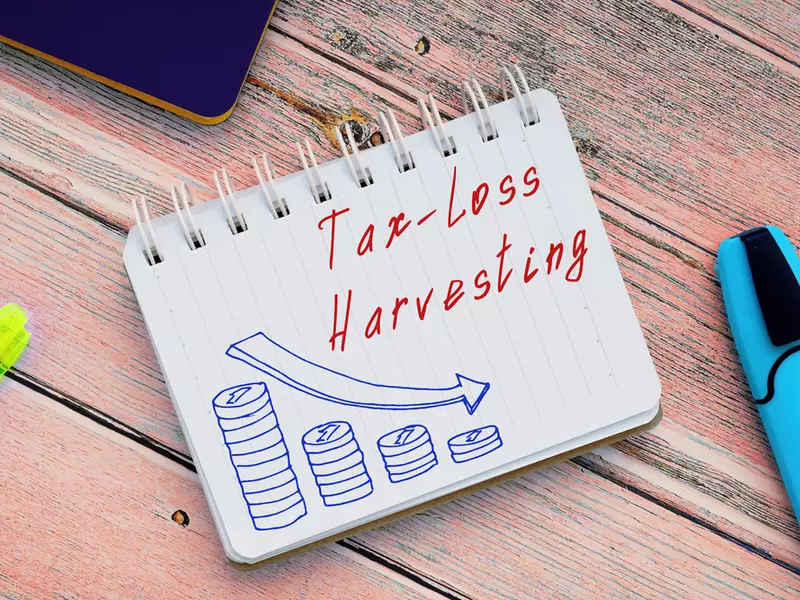
We all pay taxes in some way or the other, no matter how much it may pinch our pockets. Yet, out of our income, we pay taxes in the form of income tax, GST on purchases, tax on returns from mutual fund investments, etc. But, did you know that if the value of an asset in your investment portfolio falls, you could fetch tax benefits? So, how is this possible?
This brings us to the topic of tax harvesting or tax-loss harvesting. This method relies on certain opportunities to arise and by tapping on these, it can help us increase post-tax returns on investment.
Here, we will explain how tax harvesting can be used to reduce and save taxes.
What is tax harvesting?
Meaning
Tax harvesting involves selling a loss-making security by realizing or “harvesting” the loss. This method helps investors to easily offset taxes applicable on gains or income. In this method, one has to ensure that the securities move out of the taxpayer’s Demat account via a sale or delivery transaction and subsequently buy them the following day.
How does tax harvesting work for short-term capital gains?
In tax harvesting, the security that is sold will have to be replaced by a similar one. This is to ensure that an optimal asset allocation is maintained such that the expected returns remain the same.
Let’s take an example to understand tax harvesting.
Suppose an investor earns Rs. 1 lakh as short-term capital gains in a financial year. This means he/she will be liable to pay 15% of the earnings as taxes. Thus, the STCG will be Rs. 15,000. Let’s say that the investor also has stocks in his/her portfolio that have an unrealized loss estimated at Rs. 40,000.
If he/she sells these loss-making stocks, he/she can bring down the net STCG to Rs 60,000. Thus, the 15% tax will be applicable on Rs. 60,000, bringing down his/her tax liability to Rs. 9,000. The investor thereby saves Rs. 6,000 in taxes.
This is tax-loss harvesting or the process with which one can harvest losses and save taxes.
How does tax harvesting work for long-term capital gains?
Long-term capital gains are the returns made from the sale of securities or fund units held for more than 12 months. Before 2018, any long-term capital gains (LTCG) earned from the sale of equity shares or equity mutual funds were entirely tax-free in the hands of investors. This was modified after the Union Budget 2018 announcement.
Starting from April 1, 2018, LTCG of over Rs. 1 lakh attracts tax at 10% and no indexation benefit can be availed. Although most investors use tax harvesting for STCG since the tax rates on short-term capital gains are higher, they can also make use of this tax-saving technique in LTCG.
Continuing the same example as SCTG..
Suppose an investor earns Rs. 1 lakh as long-term capital gains in a financial year. Thus, the applicable tax rate will be 10% of the earnings. This makes LTCG tax at Rs. 10,000. If the investor has stocks or mutual fund units that have an unrealized loss of Rs. 50,000, he/she can use tax harvesting as below.
By selling loss-making stocks or mutual fund units, he/she can arrive at the net LTCG of Rs 50,000. The 10% tax will now be applicable on Rs. 50,000 and therefore the tax liability will be Rs. 5,000. Thus, the investor saves Rs. 5,000 in taxes.
Factors to note while using tax harvesting to save taxes
While using tax harvesting to set off losses against gains and thereby saving taxes, one needs to bear the below-mentioned in mind:
- Short-term capital losses are allowed to be adjusted against short-term capital gains or long-term capital gains.
- However, long-term capital losses can be adjusted only against long-term capital gains. Therefore, long-term capital losses cannot be adjusted against short-term capital gains.
- It is important for investors to remember that they may have to reinvest the sum immediately after redemption. If not done, they may have to lose out on the benefit of compounding.
Example of tax-loss harvesting
Tax loss harvesting is a strategy that investors can use to minimize their tax liabilities by selling securities that have decreased in value. This allows them to offset any gains that they may have realized from other investments and reduce their overall tax bill.
For example, let’s say that an investor bought shares of a company for Rs. 100 each and the price has since dropped to Rs. 80. If the investor sells the shares at the lower price, they can realize a loss of Rs. 20 per share. They can then use this loss to offset any gains they may have realized from other investments, reducing their overall taxable income. Tax loss harvesting can be a powerful tool for investors looking to manage their tax liabilities and optimize their investment portfolios.
Conclusion
Although an indirect way, tax harvesting helps investors or taxpayers in maximising their wealth, specifically at the start of their portfolio’s life span. It acts as an effective tool to reduce the overall tax liability on equity investments.
FAQs
Yes, tax harvesting is about adjusting equity losses against equity gains to bring down the overall tax liability. Since this can be done within the provisions of the Income-tax Act, it is considered completely legal.
Since LTCG tax is applicable only on long-term gains made over Rs. 1 lakhs, you will anyway not be liable to pay taxes on the same and therefore there is no need to use tax harvesting.
While using tax harvesting to save taxes, taxpayers must consider costs involved in it, such as security transaction tax, brokerage, etc which may nullify the benefit of tax save if not estimated carefully.
It is easy to calculate tax saves that can be achieved through tax harvesting. However, for a new investor who has just started on an equity investment journey, it makes sense to consult tax experts who can guide with the calculations on tax harvesting within the scope of income tax law
The concept of tax harvesting is based on the utilization of equity-investment related losses to set off against equity gains in a financial year. Therefore, if there are no losses from equity investments in a given year, it is not possible to make use of tax harvesting.


























